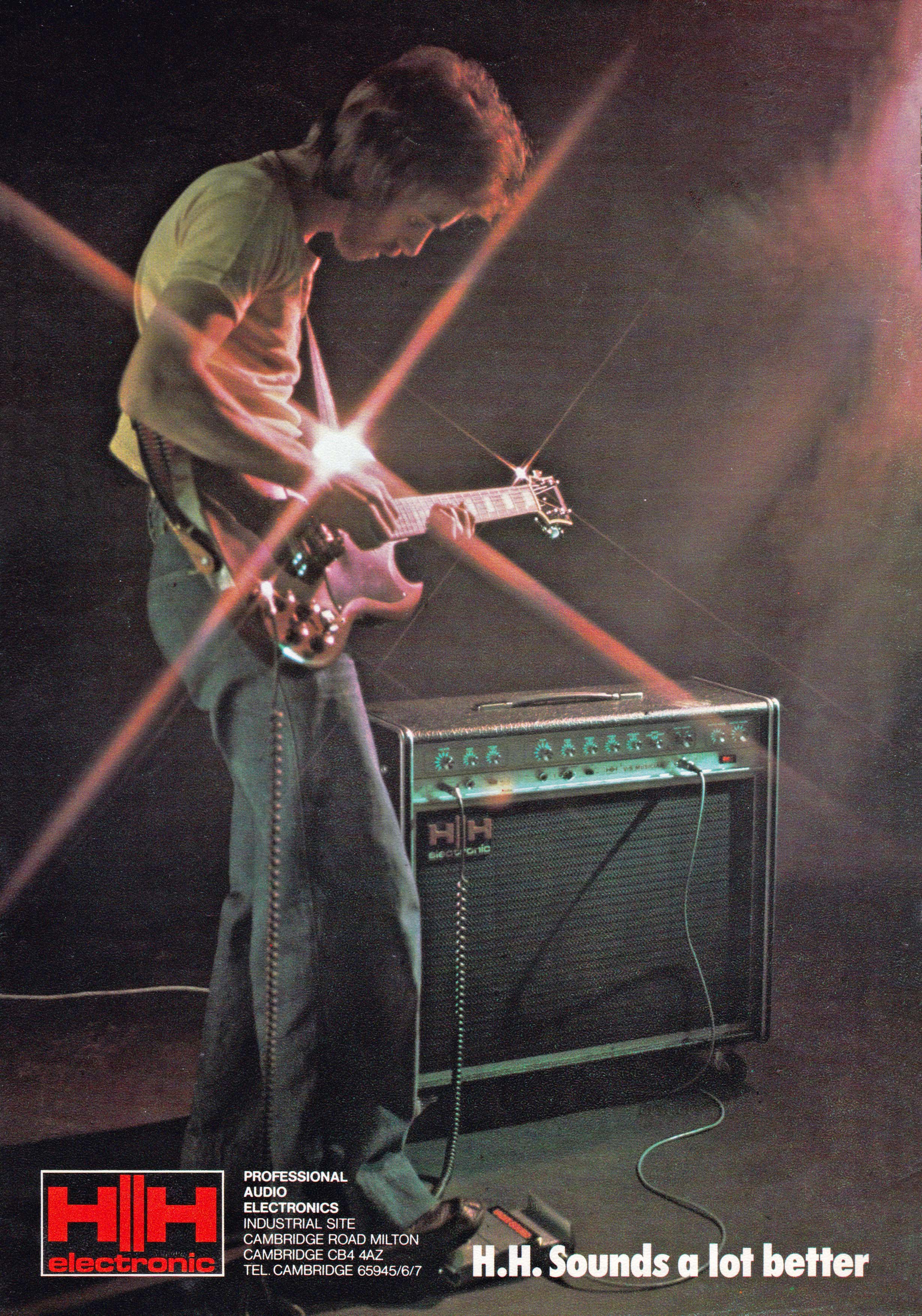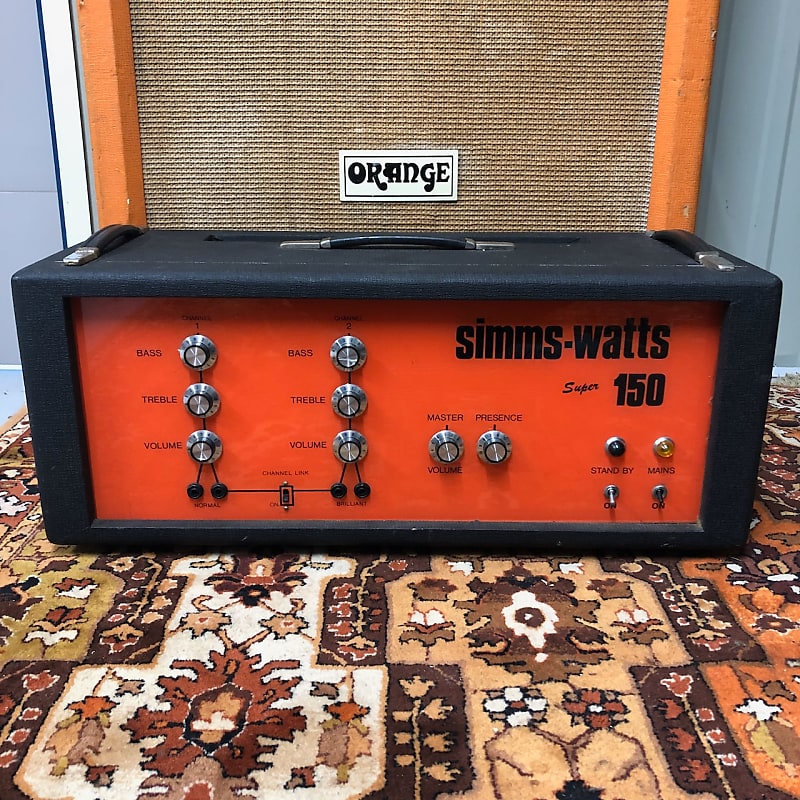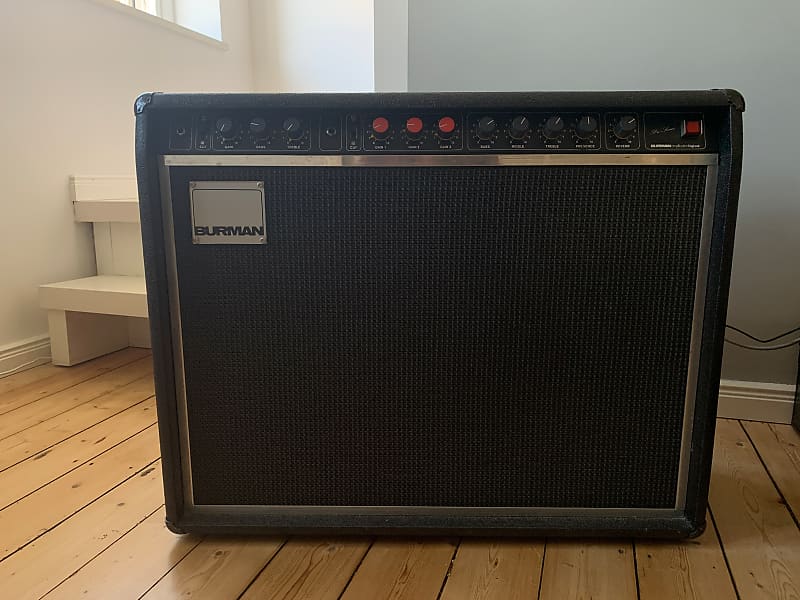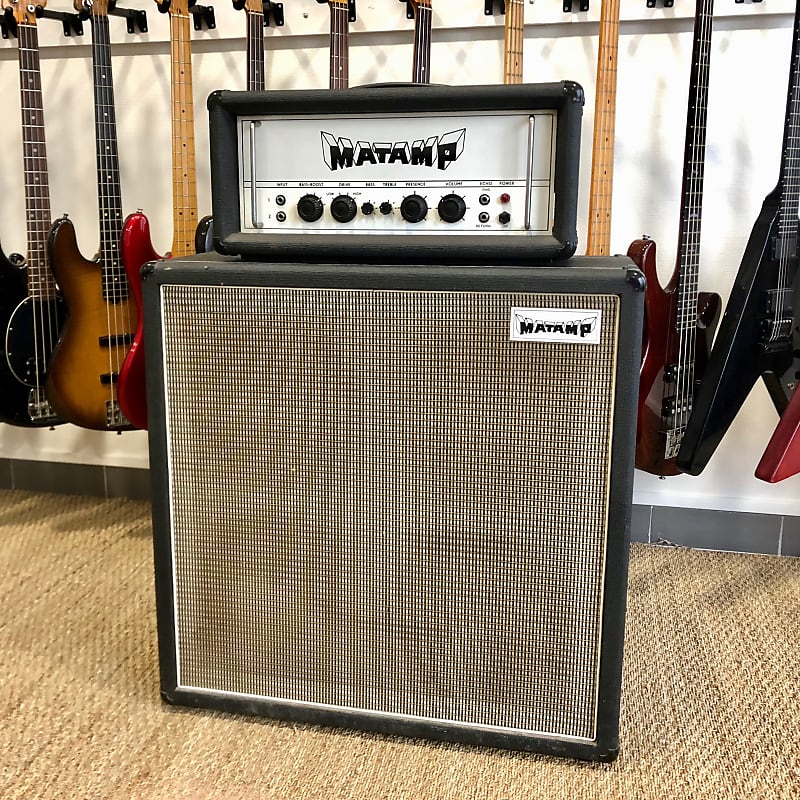The first wave of British Invasion bands in the '60s was led by The Beatles and The Rolling Stones and brought with it UK guitar amp brands like Selmer and Vox. The second wave, led by The Who, Cream, Jethro Tull, Led Zeppelin, and many others didn't bring just one brand, but several—the biggest of which was Marshall.
But there were plenty of other interesting British amps that came along from the '60s to the '80s and which are still to be found today, sometimes at attractive prices and often with great potential for the tone hound. Here are six makers and models worth looking for.
For more on vintage British amps, see the original entry in this series here.
Sometimes (and very wrongly), Hiwatt is thought of as just a sturdier Marshall. Hiwatt amps were the brainchild of the designer Dave Reeves, who cut his teeth working on Sound City amps before striking out in 1968 on his own with the Hiwatt brand.
Popular legend associates Pete Townshend with Marshall, but as he has said many times in interviews, he was never a great fan of the archetypal Marshall distorted sound. Townshend had started with Fender amps and later discovered the huge, clean volume of Hiwatt's heads and the cabs loaded with Fane speakers.
Robustly made to military specs, Hiwatt's amps had a sound of their own—and Townshend loved it. He was not alone. Jethro Tull, The Moody Blues, and perhaps most significantly Pink Floyd's David Gilmour all loved it, too. Hiwatt went rapidly from strength to strength.
Sadly, Reeves died in an accident in 1981, following which the company suffered a disastrous split in ownership. An American company acquired the rights to the name in the USA, and a separate company owned the name in the UK. Neither venture was showered with glory, meaning a good bet is to try to find a Hiwatt produced before Reeves died. This is easily spotted, because the tubes were mounted directly onto the chassis, where later ones were sometimes not so well constructed.
Hiwatts came in 50, 100, 200, and 400-watt versions, with a variety of combo options. All are distinctive sounding, but probably the most sought after is the 100-watt EL34-powered DR103, much in demand by Gilmour fans. Teamed with a Fane-loaded 4x12, there isn't much to touch a DR103, though Gilmour famously paired his with WEM 4x12s.
Don't overlook lesser Hiwatts—they all share the family sound and robustness, are easy to service and repair, but are unlikely to be cheap. Recently, the divided Hiwatt family was reunited under a single Canadian owner and is in the process of being revived.

If Hiwatt and Marshall epitomized British tube amps, HH was the exact opposite. The electronics designer Mike Harrison was a pioneer of high powered solid-state amplification, and he had an impressive pedigree, having worked on power amp designs for industrial users and the BBC.

Turning his attention to guitar, bass, and PA amplification, Harrison introduced solid-state amps to the musician's market in 1971. Despite being all-transistor at a time when "transistor" was a synonym for "unreliable" and "bad sounding," the new HH products met with some success, despite the fact that they, too, suffered from reliability issues. You can add "noisy" as well, because they were.
As production continued, the amps became more reliable. They certainly stood out from the crowd, thanks to a glowing green electro-luminescent front panel that became an HH trademark. Loud and clean, they became popular on the semi-pro scene but won few notable pro users, with the exception of Marc Bolan. Unusually for solid-state amps from this era, HH's IC-100 models are still serviceable thanks to a dedicated specialist in the UK, MAJ Electronic, whose website is worth reading for the style, let alone the encyclopedic content.
HH made some very creditable PA amps, which at one time seemed more or less standard issue for British semi-pro bands, as well as similarly good bass amplification. But the HH amps to look out for are the "Music Range" V-S Musician models from the mid '70s. "V-S" stood for "valve sound," which was stretching a point. What they did have was characteristic HH loudness and good looks, onboard distortion, and some attempt to get a tube overload sound.
Arguably it was the bass version, the V-S Bassamp, that was the best of the lot, but a V-S Musician (with or without reverb as an option) could make a useful purchase today.
HH Electronic was a few decades ahead of its time as its loud, clean formula could appeal today to guitarists who derive their tone from pedals. Look out, too, for HH's superb power amps, like the V150-L, V200, V500, and V800 models. HH stumbled when it overreached for new markets, and it was eventually sold to a rival UK amp maker, Carlsbro, which sold on the HH name to fellow UK maker Laney in the '90s.

Jim Marshall wasn't the only music-shop owner in Ealing, west London with a range of his own amplifiers. Dave Simms had some, too—and for a brief interval his amps were also very successful, though quite different from Jim's offerings.

The Watts half of the name came from electronics designer Richard Watts. Simms-Watts offered sturdy and powerful amps for bass, keyboard, and guitar, as well as PA. They had some influential users, too, and the most prominent was The Who's John Entwistle, who endorsed the bass amps alongside those from Hiwatt.
In some ways, Simms-Watts amps were more akin to Hiwatts than Marshalls, offering huge headroom before distortion and strong construction. It wasn't only bass players who liked the sound. Mick Ronson—David Bowie's guitarist during the Ziggy Stardust era—was another Simms-Watts fan.
Two models in particular worth looking for are the AP100, with EL34 tubes, and the AP200, with KT88s. Both are loud, clean, and much liked by pedal users. Current users of vintage Simms-Watts include Jamie Cook of Arctic Monkeys, who favors an AP100. Simms-Watts was sold to the giant EMI company in the early '70s and vanished not long afterward.

Inextricably linked with Hiwatt, Sound City was designer Dave Reeves' first foray into manufacturing, working either as a contractor or an employee (accounts differ) for the distributor Dallas-Arbiter. Reeves initially built 100-watt tube heads in the back of the Sound City shop in London, eventually settling on the L100 amp design, which was launched in 1967.
As with the amps Reeves later produced under the Hiwatt name, these were loud and a lot cleaner than the Plexi Marshalls they competed against. It was a formula much liked by The Who—they immediately became users and were soon followed by Jimi Hendrix, who sometimes used Sound City stacks alongside his Marshalls.
After Reeves left to go solo, Sound City carried on, led by Denis Cornell (who is still in business as a boutique builder). Though it is said Dallas-Arbiter wanted to sacrifice some of Reeves's obsession with quality, Cornell's Sound City offerings are not to be sniffed at. The 200 was a KT88-powered 200-watt monster that stands comparison with the Marshall Major. It's well worth tracking one down, especially if you have the taste for clean and loud—and you look forward to becoming a good customer for a hearing aid specialist.

Gregg Burman had a relatively short but meteoric career as a major-brand UK amp builder. Starting out in the industrial heartland of Newcastle upon Tyne in north-east England, Burman began making his characteristically bomb-proof tube amps in 1966. He labored away locally, earning a strong reputation, until the late '70s when his amps suddenly exploded onto the scene.

The exceptionally well-built (but heavy) Burman Pro Series was launched in 1974 and featured a triple preamp gain section. The first series came in 50-watt and 100-watt single or twin-channel combos, in 1x12 and 2x12 versions, and there were also 100-watt heads. Later models saw a switch to high quality Gold Lion KT77 tubes (they were badged accordingly) and were then rated at 70 and 100 watts respectively. Notable users included Thin Lizzy—Scott Gorham was particularly keen—and Status Quo.
Burman launched the GX3 preamp, which received rave reviews and should have gone on to be a great seller. Unfortunately, Burman closed the company in the early '80s, having lost a controversial lawsuit with a publisher. A few years later, he suffered a disabling stroke and never returned to amp making. For all that, many Burman amps still survive. They were well ahead of their time, are still repairable, still sound extremely good, and are not overpriced.

German refugee Mat Mathias formed RadioCraft in Yorkshire, northern England in the mid '40s, and for some years he traded in a small way above a shop selling sweets and tobacco. Mathias won a reputation for building great sounding, sturdy amps for local bands during the '60s.

In 1968, Cliff Cooper, who owned a music shop in London, approached Mathias, asking him to begin building amps under the name of Cooper's shop: Orange. The result was the near-legendary Orange Matamp, used by Peter Green (reputedly featuring on "Albatross"), Paul Kossoff, Jimmy Page, Wishbone Ash, and a host of other '70s guitar heroes. Impossible to miss thanks to Orange's striking color and graphics, an original Orange Matamp head would be very desirable today.
The partnership between Cooper and Mathias ended in the early '70s. The story goes that Cooper wanted more amps than Mathias felt he could build to the standards he insisted on. Matamp continued alone, and the rarest of these amps worth looking for from the post-Orange era is possibly the 1981 V-14 1x15 combo, of which only 40 were said to have been made. They were superbly versatile.
Mat Mathias died in 1989, but Matamp carried on and still produces very traditional tube amps. If you don't mind something more recent, try a 1992 (and later) Green Matamp, a sort of "breathed on" GT 120, named for Peter Green. Around 1998, a US Matamp was born, but space prohibits retelling what became a long and tangled story.
Correction: An earlier version of this article incorrectly stated that the Rolling Stones used Sound City amps at their 1969 Hyde Park concert. They in fact used Hiwatt amps for the occasion.

About the author: Gary Cooper is a journalist working in the musical instrument and pro audio fields. He contributes to a number of music magazines and websites. He lives in Sussex, England.
